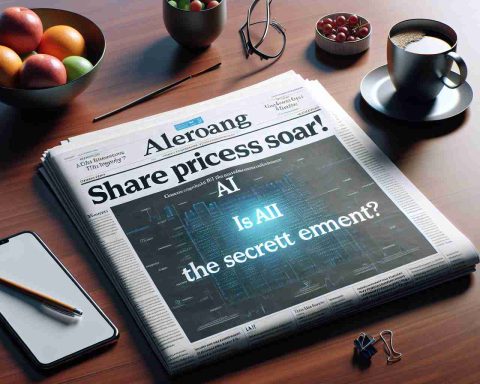Recent Developments in Enhancing Quantum Error Mitigation
In the realm of quantum computing, a notable breakthrough has been made in refining strategies to address quantum errors. These advancements have propelled the field towards greater efficiency and accuracy in quantum computations, marking a significant step forward in overcoming the primary obstacle faced by quantum computers.
Innovative Utilization of Machine Learning for Error Mitigation
One remarkable approach involves the integration of machine learning techniques for quantum error mitigation. Through a series of experiments conducted on cutting-edge quantum computers encompassing up to 100 qubits, it has been demonstrated that Machine Learning for Quantum Error Mitigation (ML-QEM) can dramatically reduce the overhead costs associated with error mitigation without compromising on precision.
Exploration of Diverse Machine Learning Models and Quantum Circuits
Various machine learning models, including linear regression, random forest, multilayer perceptron, and graph neural networks, have been employed to optimize error mitigation across different quantum circuits. These models have been tested under various noise profiles, both in simulations and practical implementations, showcasing their adaptability and efficacy in enhancing the performance of quantum computations.
Roadmap to Scalable Quantum Error Mitigation
The results obtained from these experiments not only emphasize the potential of classical machine learning in revolutionizing quantum error mitigation but also pave the way for a scalable approach that mirrors traditional mitigation techniques but with enhanced runtime efficiency. By leveraging machine learning algorithms, quantum computing stands to benefit from reduced overhead costs and increased practicality, promising a brighter future for quantum computations.
Advancements in Quantum Error Mitigation Techniques
In the continuous evolution of quantum computing, researchers have been making significant strides in advancing quantum error mitigation techniques beyond the scope of traditional methods. While the previous article highlighted the integration of machine learning for error mitigation, there are additional noteworthy developments that are reshaping the landscape of quantum error correction.
Quantum Error Detection and Correction Strategies
Alongside error mitigation, quantum error detection and correction strategies are crucial components in ensuring the reliable operation of quantum computing systems. Researchers have been exploring novel approaches utilizing quantum error correcting codes such as surface codes and color codes to detect and correct errors effectively. These codes offer a robust framework to mitigate errors caused by noise and decoherence in quantum systems.
Entanglement-based Error Correction Protocols
Entanglement, a fundamental property of quantum mechanics, has been leveraged to develop sophisticated error correction protocols that can enhance the fault tolerance of quantum computations. By entangling qubits across quantum registers, researchers have devised schemes that can detect and rectify errors without disrupting the overall quantum state, thereby enabling more resilient quantum computing operations.
Hybrid Error Mitigation Techniques
To address the challenges posed by noisy quantum environments, hybrid error mitigation techniques combining classical error correction methods with quantum error correction have emerged as promising solutions. By integrating classical error correction codes with quantum error correction capabilities, researchers are exploring hybrid schemes that can significantly improve the reliability and accuracy of quantum computations.
Key Questions and Challenges
– How do quantum error mitigation techniques impact the scalability of quantum computing systems?
Quantum error mitigation techniques play a vital role in enhancing the scalability of quantum computing systems by minimizing the impact of errors on computational outcomes. Developing efficient and scalable error mitigation methods is essential for realizing the full potential of quantum computers in solving complex problems.
– What are the controversies surrounding the implementation of quantum error mitigation techniques?
One of the key controversies in the field of quantum error mitigation relates to the trade-off between error correction overhead and computational resources. Balancing the overhead costs of error mitigation with the computational advantages gained is a critical challenge that researchers are actively addressing to optimize the performance of quantum computing systems.
Advantages and Disadvantages
Advantages:
– Enhanced fault tolerance: Quantum error mitigation techniques improve the fault tolerance of quantum computations, enabling more reliable and accurate results.
– Increased computational efficiency: By reducing error-induced disruptions, quantum error mitigation techniques enhance the computational efficiency of quantum algorithms.
– Potential for scalability: Effective error mitigation methods pave the way for scalable quantum computing systems capable of handling larger and more complex computations.
Disadvantages:
– Complexity of implementation: Implementing advanced error mitigation techniques requires expertise in quantum error correction and computational algorithms, posing challenges for researchers and developers.
– Overhead costs: Some error mitigation techniques may incur additional computational overhead, impacting the overall performance and efficiency of quantum computations.
– Interference with quantum operations: In certain cases, error mitigation procedures may interfere with the quantum states or operations, leading to potential inaccuracies in computation results.
For further exploration of quantum error mitigation techniques and their implications, you can visit the Quantum Computing domain.


















